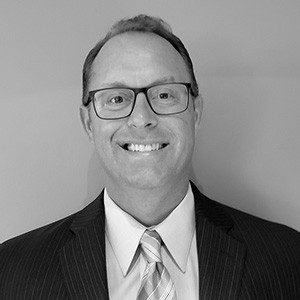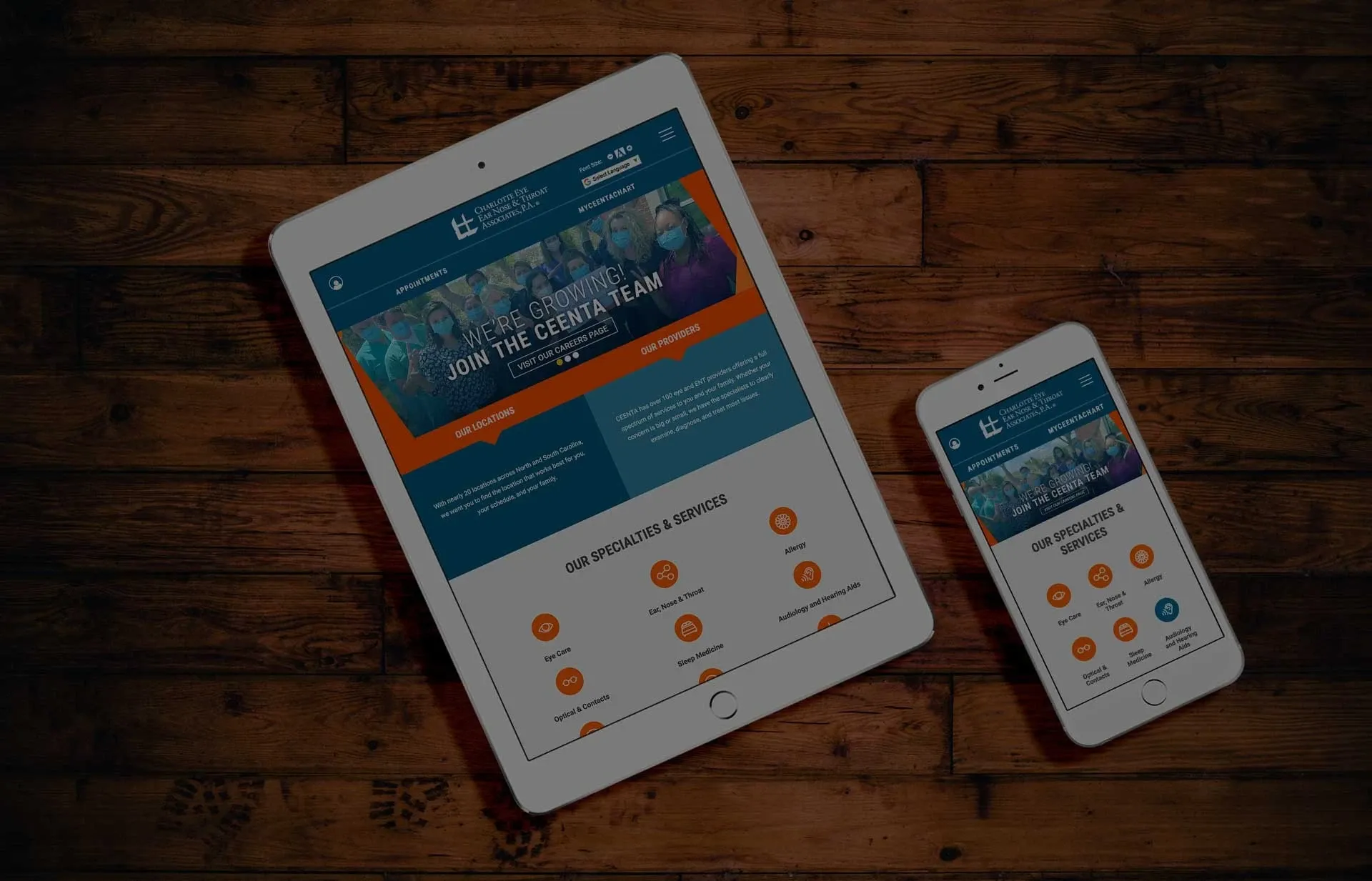Key Orthopedic Marketing Trends to be Aware of Heading into 2025
All healthcare specialties, Orthopedic practices in particular, have had to navigate challenges in recent years. Data privacy & compliance, staffing shortages, increased competition, and better-informed patients have all affected the way orthopedics operates. However, growth opportunities are still abundant as we look forward to 2025. With the right marketing strategies, orthopedic groups can effectively engage patients, stay competitive, and capture a significant share of the market.
1. Optimize Capacity for Better Patient Flow
In 2025, orthopedic practices must be strategic in balancing patient demand with available resources. E-dreamz has always approached all of our healthcare marketing campaigns by following our "capacity for care" strategy, and that doesn't change for the new year. Overbooking or underutilizing individual providers, offices, care teams, or surgical facilities can lead to inefficiency, patient dissatisfaction, and missed revenue opportunities. Using real-time capacity data allows marketing teams to optimize patient flow, ensuring that marketing efforts align with the clinic's operational needs.
Key Strategies for Capacity Management:
- Adjust marketing efforts dynamically by tracking service availability.
- Prioritize overbooked services and allocate marketing budgets accordingly.
- Leverage technology to integrate scheduling tools with marketing platforms for seamless updates.
Aligning marketing strategies with operational capacity helps maintain a smooth patient experience, avoid long wait times, and maximize revenue potential.
2. Align Marketing and Operations for Seamless Patient Experience
Coordination between marketing and operations is crucial to delivering a seamless patient journey. When marketing messages do not align with actual service availability or timelines, patients may feel misled, damaging trust. By syncing messaging, service line promotions, and technology, practices can ensure patients receive the care they expect.
Best Practices for Alignment:
- Coordinate messaging to reflect current realities, ensuring promises like same-week consultations align with actual availability.
- Balance service demand by promoting services with lower capacity, like physical therapy, during times of high-demand procedures.
- Integrate technology to sync CRM, scheduling, and marketing platforms for more effective campaigns.
A united approach between marketing and operations enhances both patient satisfaction and operational efficiency.
3. Prioritize Authenticity in Orthopedic Marketing
In a world flooded with AI-generated content, patients are looking for authentic, human-driven communication. Authenticity builds trust and sets orthopedic practices apart from competitors. Featuring real orthopedic professionals, sharing real patient stories, and providing expert advice helps create a genuine connection with potential patients.
How to Enhance Authenticity:
- Feature real experts in your content to build credibility. Surgeons and therapists sharing personal insights will resonate more than generic content.
- Address real patient concerns by offering useful, unique content that provides value.
- Create community-driven platforms, such as online forums or podcasts where patients and practitioners can connect.
Orthopedic practices that prioritize authenticity can build long-lasting relationships with patients, leading to increased trust and loyalty.
4. Utilize Influencers and Micro-Influencers for Wider Reach
Influencer marketing is becoming increasingly effective in healthcare marketing, including orthopedics. Partnering with influencers or micro-influencers in the health, fitness, or wellness space helps orthopedic practices reach new, engaged audiences. These partnerships offer a human touch to healthcare marketing, making practices more relatable and accessible.
Influencer Marketing Tips for Orthopedics:
- Focus on relevance by collaborating with influencers who share your practice’s values and audience interests.
- Allow influencers to share authentic stories, rather than providing scripted content, to maintain genuine connections.
- Measure engagement and conversions to assess campaign effectiveness.
Micro-influencers, who have smaller but highly engaged followings, offer orthopedic practices a cost-effective way to promote services while maintaining authenticity.
5. AI and Data Analytics: The Future of Orthopedic Marketing
Artificial Intelligence (AI) is transforming healthcare marketing, offering opportunities for smarter targeting, predictive analytics, and personalized patient engagement. AI tools can analyze large datasets, predict trends, and optimize campaigns based on real-time data, enhancing marketing precision and efficiency.
How AI Can Transform Marketing:
- Target patient segments more accurately by using AI to predict which individuals are most likely to seek specific orthopedic services.
- Personalize content based on AI-driven insights, tailoring emails or advertisements to specific demographics.
- Improve operational efficiency by using AI to optimize appointment scheduling, reducing wait times and increasing patient satisfaction.
While AI offers vast potential, orthopedic practices should ensure that human oversight remains a priority to maintain trust and accuracy.
6. Measure Marketing Success with New Metrics
As traditional marketing metrics become less reliable, especially in light of privacy laws and platform restrictions, orthopedic marketers need to adopt new methods to assess their efforts. Media Mix Modeling (MMM) is an advanced approach that analyzes historical data to understand how various marketing channels contribute to patient bookings and revenue.
Innovative Measurement Approaches:
- Implement Media Mix Modeling to understand the effectiveness of different channels and strategies.
- Use interpretive tools like SEMRush to gain insights into which campaigns and service lines drive patient conversions, allowing for more informed decisions.
- Maintain focus on your competition by analyzing where your practice already has a dominant digital footprint and where you need to employ campaigns targeted for conquesting your competitors' strongest areas.
Measuring success with advanced tools like MMM ensures that orthopedic practices can allocate resources efficiently and optimize their marketing strategies.
7. The Evolving Role of Marketing Leaders
Marketing leaders in orthopedic practices are taking on more responsibilities than ever before. In 2025, the role will extend beyond campaign management to include overseeing the entire patient journey—from awareness through to treatment completion. This requires a deep understanding of both marketing and operational workflows.
Key Responsibilities for Marketing Leaders:
- Manage cross-departmental collaboration, ensuring marketing aligns with patient care operations.
- Leverage CRM and patient satisfaction tools to improve the patient experience and increase retention.
- Monitor ROI across all marketing efforts and optimize campaigns based on performance data.
Marketing leaders must evolve to keep up with the growing demands of their roles and ensure that every marketing initiative drives measurable, positive outcomes for both patients and the practice.
Conclusion
As we look toward 2025, orthopedic practices will need to innovate to stay competitive. By embracing trends like capacity optimization, authenticity in communication, influencer marketing, AI-driven strategies, and more, orthopedic groups can strengthen patient relationships and position themselves for long-term growth. The key is to align marketing efforts with operational realities, focus on authentic patient engagement, and measure success with the right tools.

About the Author
Nathan Pulver, President & CEO
Nathan founded E-dreamz in 1999 and has been leading our operations ever since. With a diverse background in web design, marketing, media and consulting, Nathan is more than just our agency's leader - he's the driving force behind E-dreamz' mission, vision and innovative approach to professional services. Nathan's entrepreneurial spirit and focused determination have molded E-dreamz into one of the longest-running and most successful software development and managed services agencies in the country.
« Back to Blog
- How Healthcare Providers Can Optimize Their Google Business Profile in 2025
- How Healthcare Providers Can Use Google Performance Max to Attract More Patients
- Top Healthcare Marketing Trends to Watch in 2025
- How to Prevent Keyword Cannibalization
- 2025 Outlook: E-dreamz’ SEO Philosophy for the New Year
Ready to Get Started? Contact Us Today to Schedule Your Discovery.

© 2025. All rights reserved. E-dreamz, Inc.

